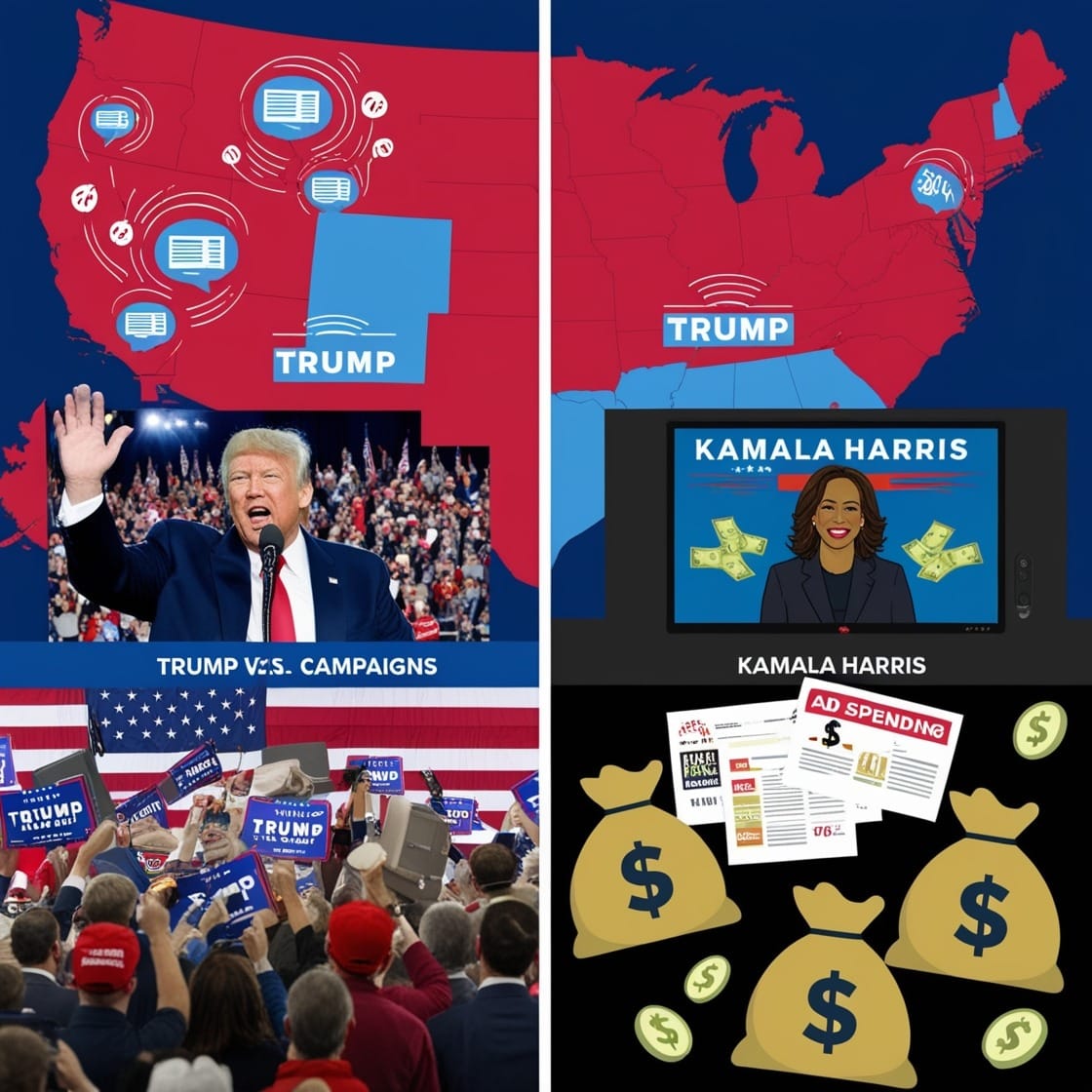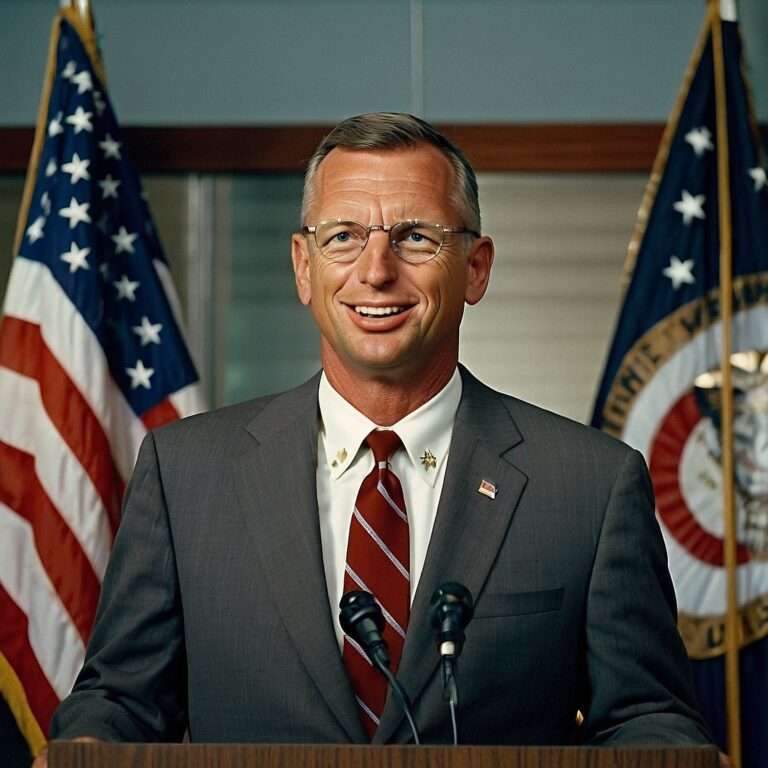
Trump leverages earned media while Harris dominates ad spending in the 2024 election, as both candidates fight for control in battleground states
As the 2024 presidential race heats up, Donald Trump vs Kamala Harris are deploying their campaign strategies, with ad spending playing a crucial role in shaping voter sentiment and polling trends. From targeted digital ads to high-budget TV spots, each dollar spent reflects a broader plan to sway key demographics and secure pivotal swing states.
In this article, we break down the ad spending strategies of Trump and Harris, analyze their impact on polling numbers, and explore what this means for the outcome of the 2024 election. Whether you’re tracking campaign tactics or curious about how money influences votes, this deep dive reveals the critical dynamics shaping the road to the White House.
While Harris has deployed over $270 million in ads this fall, Trump’s reliance on earned media and grassroots fundraising offers a counterweight to her financial advantage. But as polls remain tight in key battlegrounds, a crucial question emerges: Does ad spending guarantee results—or does media visibility carry more power in the modern political landscape?
Ad Spending and Campaign Strategies
Kamala Harris
- September Ad Spend: $270 million
- Focus: Taxes, healthcare, and character messaging
- Funding: Primarily through the Democratic Party’s infrastructure and corporate donors, with much of it inherited from Biden’s campaign【112】【118】.
- Battleground Targeting: Airwave saturation in states like Pennsylvania, Georgia, and Michigan.
Donald Trump
- September Ad Spend: $78 million
- Focus: Attack ads on crime, immigration, and transgender policies【111】.
- Funding: Heavy reliance on small-dollar donations from individual supporters and key contributions from super PACs, funded by figures like Timothy Mellon and Elon Musk【118】.
- Campaign Strategy: Leverages free media coverage through frequent rallies, interviews, and controversies.
Polling Tightens: Swing States on a Knife’s Edge
Polling shows deadlocks in swing states like Wisconsin, Pennsylvania, and Georgia, with margins within 1-2% between the candidates. The race remains too close to call, indicating that last-minute mobilization efforts will be critical in deciding the winner【139】.
Meanwhile, betting markets favor Trump, with 4/7 odds suggesting a 64% implied probability of victory. This reflects a broader shift in sentiment—despite Harris’s heavy ad spending, many believe that Trump’s media strategy and voter mobilization could deliver the win【132】.
DARWIN’s Take: The Power of Earned Media
Here’s the twist: Harris’s ad saturation may not be enough. While ads can boost visibility, Trump’s earned media advantage—even when overwhelmingly negative—keeps him front and center. Visibility outweighs positivity in today’s political climate, and Trump’s strategy ensures that he shapes the conversation, for better or worse. This constant media presence appeals to voters seeking authenticity, reinforcing the idea that he is an outsider taking on the establishment.
Meanwhile, Harris’s reliance on traditional advertising reflects a legacy political strategy that may struggle to cut through in the modern media landscape. Ads can’t build the same emotional connection or viral momentum as Trump’s frequent, unscripted appearances. With polls razor-thin and voter enthusiasm key, Trump’s ability to stay in the spotlight without burning through cash could prove decisive.
Sources and Further Reading
- KTVZ Report on Ad Spending: Read More
- POLITICO Analysis on Swing State Polling: Read More【139】
- Press Xpress Campaign Insights: Read More【118】
- Oddschecker Betting Market Projections: Read More【132】
The Verdict: Ad dollars may shape the airwaves, but earned media drives narratives. As the 2024 election nears, the race isn’t just about who can spend the most—it’s about who can control the conversation.


